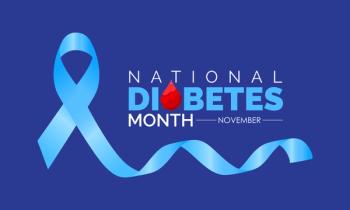
Telemedicine Associated With Direct, Indirect Cost Savings for Patients With Cancer
During the COVID-19 pandemic, patients were able to utilize telehealth services to receive care more conveniently, which may reduce the cost of care.
Patients with cancer tend to have a greater risk of financial toxicity due to the high direct and indirect cost of care. These costs include higher deductibles, co-payments, and coinsurance, as well as lost productivity and cost of driving to and from appointments. During the COVID-19 pandemic, patients were able to utilize telehealth services to receive care more conveniently, which may reduce the cost of care.
A recent
Data from telehealth visits were collected from April 1, 2020, to June 30, 2021, from completed telemedicine visits at Moffitt Cancer Center (MCC), the only National Cancer Institute (NCI)-Designated Comprehensive Cancer Center in Florida. The study identified 25,496 telehealth visits for 11,688 patients that were conducted for patients aged between 18 and 65 years during the study period.
There were 4525 (3795 patients) new or established visits and 20,971 (10,049 patients) follow-up visits. The median age of patients seen was 55 years of age (46.0-61.0), with 15,663 visits (61.4%) being women, 18,443 visits (72.3%) having private insurance, and 18,360 (72.0%) visits by White non-Hispanic individuals.
Time savings were calculated as the difference between the roundtrip time required to travel from each patient’s home address to an in-person consultation at MCC, plus in-person consultation time vs the time required to attend a telehealth visit from home (ie, time savings = roundtrip drive time + [time for in-person consultation – time for telehealth visit]). An estimated 3,789,963 roundtrip miles (804,969 for new or established visits and 2,984,994 for follow-up visits) were saved, equating to 75,055 hours (15,422 new or established visits and 59,633 for follow-up visits) of savings in total driving time. Per visit, telehealth was associated with a mean savings of 148.6 (143.7) roundtrip travel miles and 2.9 (2.3) hours of roundtrip driving time.
Additionally, 29,626 hours of in-clinic visits were saved by using telehealth with a mean savings of 1.2 (0.13) hours per visit. For new or established visits, telehealth was associated with mean savings of 177.6 (161.6) roundtrip travel miles, 3.4 (2.6) hours of roundtrip driving time and 1.5 (0.0) hours of in-clinic time per visit. For follow-up visits, telehealth was associated with mean savings of 142.4 (138.8) roundtrip travel miles, 2.8 (2.3) hours of roundtrip driving time, and 1.1 (0.0) hours of in-clinic time per visit.
The American Community Survey was used to identify census tract-level data for hourly median income per year. This study focused on patients younger than 65 years because they are more likely to be employed full time compared with patients aged 65 years or older.
Based on these findings, study investigators determined that telehealth was associated with an estimated $1,170,160 in savings in lost productivity (income) due to driving time, $467,247 savings in lost productivity due to visit time, and $1,637,407 total savings in lost productivity. The study found that in total, for new or established visits, the mean cost savings per visit ranged from $176.6 ($136.3) at $0.56/mile to $222.8 ($177.4) at $0.82/mile, and for follow-up visits, the mean total cost savings per visit was $141.1 ($115.3) at $0.56/mile to $178.1 ($150.9) at $0.82/mile.
To put this in perspective, the authors noted that telehealth was associated with a total savings of 3,789,963 roundtrip travel miles, which equates to traveling 152.2 times around the earth and a total savings of nearly 8.6 calendar years of driving time. An additional 3.4 calendar years (29,626) were saved in clinic visits by using telehealth.
Mean savings in cost productivity per visit, depending on the visit type, ranged from $44.1 to $54.1, mean savings in lost productivity due to visit time ranged from $17.3 to $23.1, and mean total savings in lost productivity per visit ranged from $61.4 to $77.2.
Mean driving cost savings per visit ranged from $79.71 to $146.0 depending on visit type and model used. The mean total cost savings per visit was between $141.1 to $222.8.
These findings underscore the importance of offering telemedicine for this patient population. Patients with cancer spend a substantial amount of time and money traveling to receive care, and telemedicine may be able to reduce the financial toxicity associated with cancer care. The study authors said that “future studies should explore other cost savings, such as the savings to cancer caregivers and how these vary for rural and urban patients with cancer.”
Reference
Patel K, Turner K, Alishahi Tabriz A, et al. Estimated indirect cost savings of using telehealth among nonelderly patients with cancer. JAMA Netw Open. 2023;6(1):e2250211. doi:10.1001/jamanetworkopen.2022.50211
Newsletter
Stay informed on drug updates, treatment guidelines, and pharmacy practice trends—subscribe to Pharmacy Times for weekly clinical insights.


















































































































































































































